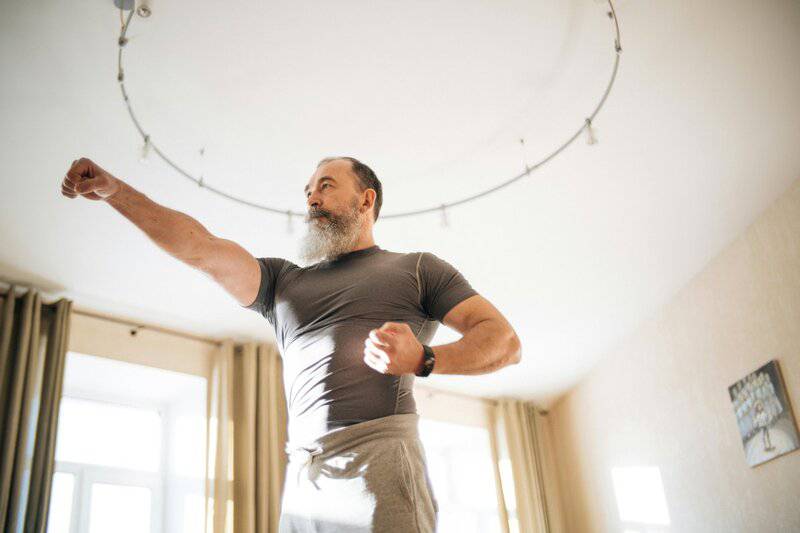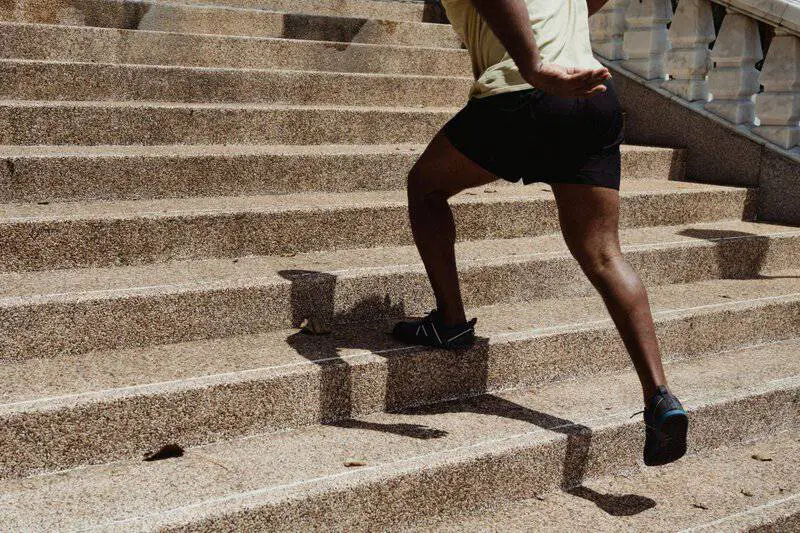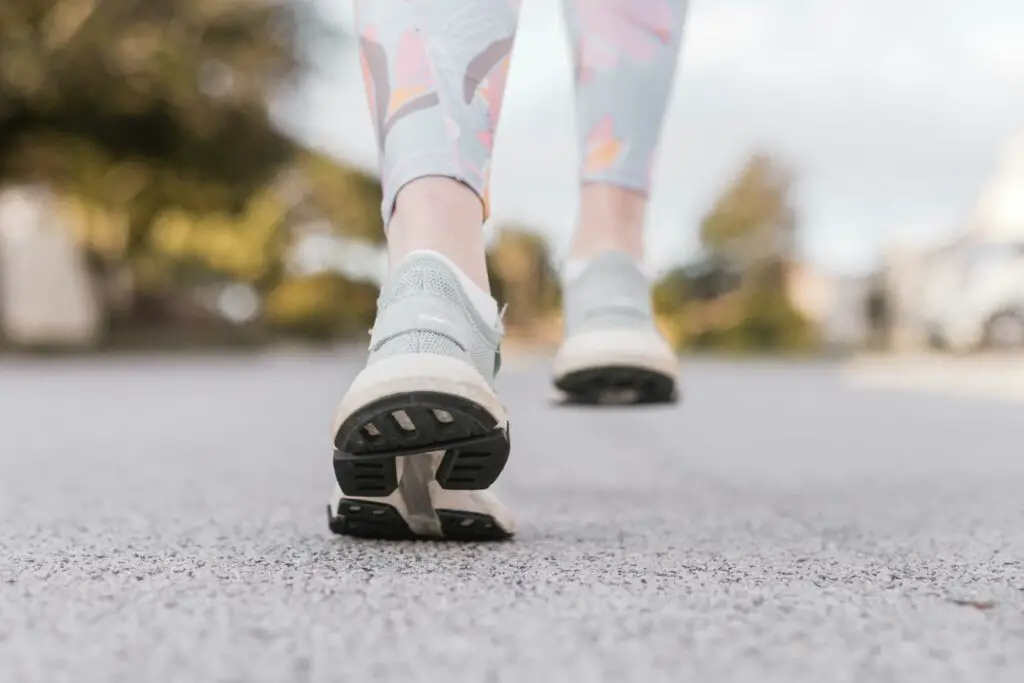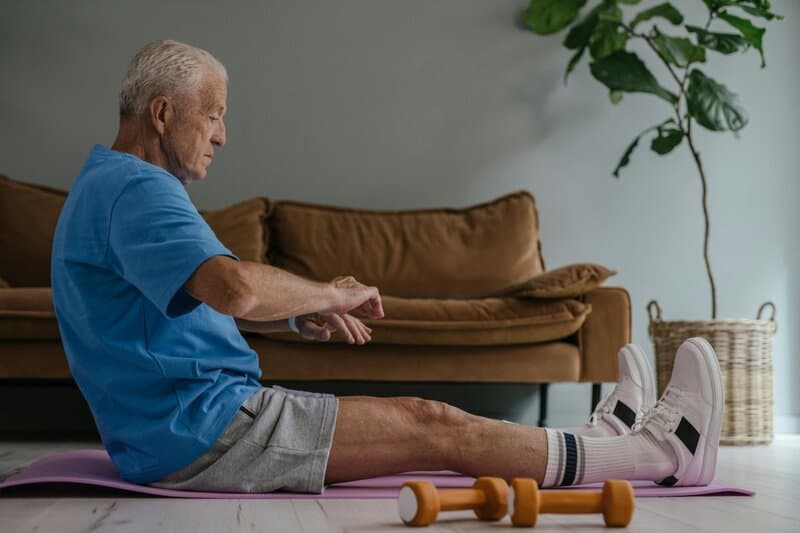Groundbreaking new research has finally answered a question that’s puzzled health experts for decades: How much exercise does it really take to extend your life? By analyzing data from over 650,000 participants across multiple continents, scientists have now quantified the exact impact of physical activity on longevity. This massive study provides clear evidence that even modest increases in movement can add years to your life. The findings underscore the critical importance of regular exercise, turning abstract advice into actionable, measurable benefits. For the first time, we can point to specific amounts of activity that make a tangible difference—giving everyone the power to shape their future health.
1. Just 75 Minutes a Week Brings Results

Surprisingly, even a modest amount of activity makes a measurable difference. Researchers found that just 75 minutes of brisk walking per week—that’s less than 11 minutes a day—can extend your lifespan by an average of 1.8 years. This benefit appears even for people who don’t reach the recommended 150 minutes per week. The key takeaway? You don’t have to be a marathon runner to reap longevity benefits. Every bit of movement counts, making health gains accessible to nearly everyone, regardless of fitness level or busy schedules.
2. Meeting Federal Guidelines: 150 Minutes Weekly

Stepping up to the federally recommended 150 minutes of moderate-intensity exercise each week delivers even greater rewards. According to the research, hitting this target—about 30 minutes a day, five days a week—can add an impressive 3.4 years to your life. This benchmark aligns with guidelines from the Centers for Disease Control and Prevention (CDC) and underscores how attainable, consistent movement leads to profound benefits. It’s a clear, science-backed prescription for living longer and better, making it easier for anyone to set and achieve life-changing goals.
3. Doubling or Quadrupling Activity for Maximum Benefit

For those willing to go beyond the basics, the rewards climb even higher. Doubling or quadrupling the minimum recommended exercise—that’s 300 to 600 minutes of moderate activity each week—can slash your risk of early death by up to 31%.
A large-scale analysis published in JAMA Internal Medicine found that the greatest longevity gains came from these higher activity levels.
While more isn’t always better for everyone, this data shows that regular, vigorous movement can dramatically amplify your body’s resilience and overall health span.
4. Brisk Walking Versus Running

When it comes to longevity, both brisk walking and running offer substantial benefits. Research shows that while brisk walking delivers impressive gains, higher-intensity activities like running may lead to even greater reductions in mortality risk.
According to Harvard Health, runners often experience slightly better heart health and longevity outcomes compared to walkers, though both forms of movement contribute significantly to a longer, healthier life.
The best approach is to choose the activity you enjoy—consistency matters most for lasting results.
5. Exercise and Cardiovascular Health

One of the most powerful ways exercise extends lifespan is by protecting the heart. Even moderate physical activity significantly lowers the risk of heart disease, which remains a leading cause of premature death worldwide.
According to the American Heart Association, regular movement improves blood pressure, cholesterol levels, and overall cardiovascular function.
This means that simple activities like walking, cycling, or swimming help keep arteries clear and the heart strong, making exercise a cornerstone of lasting health.
6. Lowering Cancer Risk

Exercise doesn’t just protect the heart—it also plays a vital role in lowering the risk of several types of cancer, which further contributes to a longer, healthier life.
According to the National Cancer Institute, regular physical activity is linked to a reduced risk of cancers such as colon, breast, and endometrial.
These benefits apply regardless of age or fitness level, making exercise a powerful tool in cancer prevention and overall longevity.
Simply put, movement is medicine for your body at every stage of life.
7. Reducing the Risk of Diabetes

Physical activity is a proven ally in the fight against type 2 diabetes. Regular exercise helps regulate blood sugar levels by increasing insulin sensitivity and improving how the body uses glucose.
According to the Centers for Disease Control and Prevention (CDC), this not only reduces the risk of developing type 2 diabetes but also helps prevent serious complications for those already diagnosed.
Even moderate-intensity activities like brisk walking can make a significant difference, supporting better metabolic health and promoting a longer, healthier life.
8. Exercise and Brain Health

Exercise isn’t just good for your body—it’s essential for your mind as well. Regular physical activity has been shown to support cognitive function and reduce the risk of dementia, including Alzheimer’s disease.
The National Institute on Aging (NIH) highlights that staying active improves memory, attention, and processing speed, while also protecting the brain as you age.
Even moderate aerobic activities like walking or cycling stimulate blood flow to the brain, helping preserve mental sharpness and boosting overall quality of life.
9. Strength Training Counts Too

While aerobic activity often gets the spotlight, muscle-strengthening exercises are equally important for longevity. Activities like lifting weights, using resistance bands, or performing bodyweight exercises support metabolic health, bone density, and functional independence as you age.
According to the Mayo Clinic, incorporating strength training just twice a week can lower the risk of chronic illnesses such as diabetes and osteoporosis.
Adding resistance work to your routine ensures a more comprehensive, long-lasting boost to your health and quality of life.
10. The Importance of Consistency

When it comes to exercise and longevity, consistency is the true game changer. Regular, sustained activity over many years—not occasional bursts of effort—delivers the strongest, most reliable health benefits.
Long-term studies reveal that people who maintain an active lifestyle experience greater reductions in disease risk and enjoy longer, healthier lives.
Building movement into your daily routine, even in small amounts, is far more impactful than sporadic, intense efforts. Making exercise a lifelong habit is the surest way to unlock its full potential for longevity.
11. Sedentary Lifestyles and Lifespan

Prolonged inactivity is more than just a missed opportunity—it’s a genuine health risk. Sedentary lifestyles have been linked to a higher risk of early death and chronic disease, even among otherwise healthy individuals.
According to the World Health Organization (WHO), physical inactivity is one of the leading risk factors for global mortality.
The good news? Even modest increases in daily movement—like short walks or standing breaks—can help counteract these negative effects and significantly improve your lifespan.
12. Exercise and Mental Health

The benefits of physical activity extend far beyond the body—regular exercise also plays a pivotal role in mental health. Studies show that consistent movement can significantly reduce symptoms of depression and anxiety, elevating mood and resilience.
The American Psychological Association (APA) reports that people who exercise regularly are less likely to experience mental health issues and often enjoy a longer, more fulfilling life.
By supporting both emotional and physical well-being, regular activity truly boosts overall quality—and quantity—of life.
13. Exercise Across Age Groups

The positive effects of exercise are not limited by age. Harvard researchers found that adults over 40 who increased their activity saw substantial longevity gains, but the benefits extend to younger people as well.
Regular movement supports healthy development, boosts energy, and lays the groundwork for lifelong well-being—no matter when you start.
From young adults to seniors, adopting an active lifestyle can help prevent disease and promote vitality at every stage of life. It’s never too early—or too late—to reap the rewards of physical activity.
14. Social Benefits and Longevity

Exercise can be even more rewarding when shared with others. Group activities and exercising with friends or peers not only make workouts more enjoyable, but also boost motivation and long-term adherence.
Social engagement itself is linked to increased lifespan and improved mental health, creating a powerful synergy with physical activity.
Whether it’s a walking club, fitness class, or team sport, moving together fosters connection and accountability, making healthy habits easier to maintain and enhancing both physical and emotional well-being throughout life.
15. The Role of Intensity

Not all exercise needs to be intense to be effective, but varying the intensity of your workouts can deliver optimal health gains.
Moderate activities like brisk walking are highly beneficial, while vigorous pursuits such as running or interval training may provide even greater reductions in disease risk and improvements in fitness.
According to the CDC, mixing both moderate and vigorous exercises each week offers a balanced approach, helping you stay motivated and maximizing the protective benefits of physical activity for longevity.
16. Avoiding Overtraining

While regular exercise is undeniably beneficial, too much of a good thing can backfire. Excessive training without adequate rest may increase the risk of injuries, fatigue, and even undermine immune function.
Experts emphasize the importance of balance—incorporating rest days and listening to your body’s signals.
Moderate, consistent activity is generally safer and more sustainable than pushing to extremes. Prioritizing recovery as part of your routine ensures you gain all the advantages of exercise without unnecessary setbacks, supporting a healthier, longer life.
17. The Power of Short Activity Bouts

Good news for busy schedules: even short bursts of physical activity add up to meaningful health benefits. The NHS encourages people to embrace sessions as brief as 10 minutes, noting that these mini-workouts still contribute to your total weekly activity goals. This approach makes the longevity benefits of exercise accessible to everyone, regardless of time constraints. Whether it’s a brisk walk during lunch or a quick stretch at home, every moment of movement counts toward a longer, healthier life.
18. Lifestyle Integration Matters

One of the most effective ways to sustain physical activity is to weave movement seamlessly into your daily life. Simple strategies like choosing stairs over elevators, having walking meetings, or opting for active commuting—such as biking or walking to work—can significantly boost your overall activity level. These habits not only make exercise more convenient but also help it become a natural, enjoyable part of your routine. By integrating movement throughout your day, you maximize health benefits without needing extra time or complicated gym sessions.
19. Tracking Progress for Motivation

Keeping track of your activity can be a powerful motivator. Fitness trackers, smartphone apps, and simple goal-setting all help reinforce positive habits and maintain consistency over time.
Monitoring your steps, workouts, or weekly totals provides visual feedback and a sense of accomplishment, making it easier to stay on track.
Celebrating milestones and setting new challenges keeps exercise engaging, while tangible progress boosts motivation.
By tracking your movement, you’ll be more likely to sustain regular activity—and enjoy the proven longevity benefits that come with it.
20. Personalized Exercise Plans

For lasting results, exercise routines should be tailored to your unique needs, health status, and personal preferences. What works for one person may not suit another, especially when considering age, medical conditions, or lifestyle factors.
Consulting with healthcare professionals or fitness experts can help you develop a plan that’s safe, enjoyable, and effective.
Personalization not only maximizes health gains but also increases the likelihood that you’ll stick with your routine. The best exercise plan is one you can sustain—and look forward to—every week.
21. Small Steps, Big Impact

As the science shows, even the smallest increase in physical activity can lead to a longer, healthier life. You don’t need to overhaul your entire routine or achieve athletic feats to see real benefits.
Just adding a few minutes of movement each day—whether it’s a walk around the block or stretching at your desk—starts building momentum for better health and longevity.
The key is to begin where you are and keep moving forward. Every step truly counts when it comes to adding years to your life.
Conclusion

The latest research leaves no doubt: exercise is a powerful, quantifiable tool for extending lifespan. From just 75 minutes of brisk walking a week to more ambitious activity goals, every bit of movement adds up to real, measurable gains in longevity.
Armed with this knowledge, you have the ability to take charge of your health and future.
Start small, stay consistent, and find activities you enjoy. Your body and mind will thank you for every step, stretch, and stride along the way.
Medical Disclaimer

This article is for informational purposes only and is not a substitute for professional medical advice, diagnosis, or treatment.
Always consult your physician or a qualified healthcare provider with any questions about your health or before starting a new exercise program.
Take care of your body—your journey to better health starts with informed, personalized choices.



Vielleicht interessiert es Sie:
Wussten Sie! Minensuchratten auf dem Schlachtfeld und sie sind super effektiv!
Wie viele Giraffenarten gibt es? Leben sie alle in Afrika?
Der Vogel ist das Weibchen der Vögel: wahr oder falsch?
Warum bauen Biber Dämme? Welchen Nutzen?
Warum leben manche Tiere nachtaktiv? Welche Vorteile?
Küssen Tiere? Ist das die gleiche Bedeutung wie Menschen?
200+ Hilarious Seahorse Jokes That Will Make You Smile and Giggle
200+ Funny Investment Jokes to Boost Your Financial Humor Game